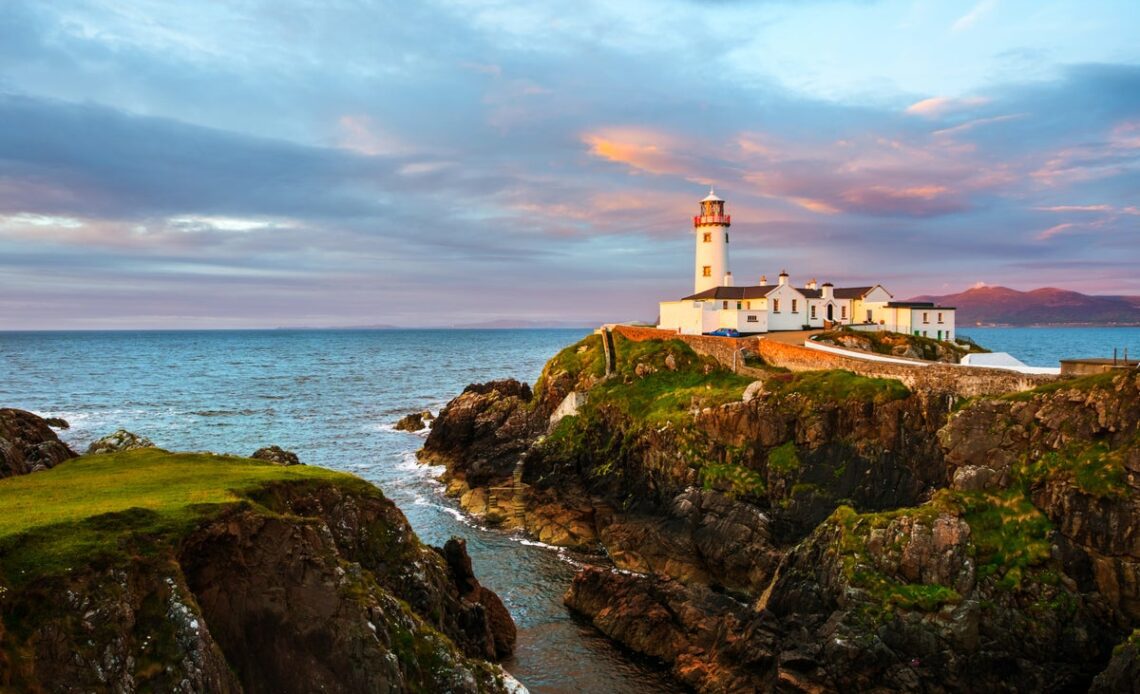Start your day with one of the finest views in Donegal: 800ft up on Greenan Mountain, the location of the ancient hill fort known as Grianan of Aileach. The location has witnessed millennia of Ireland’s history. Archaeological evidence reveals human activity stretching back 3,700 years. The earliest people here worshipped Dagda, whose name translates as “the Good God”, at ancient gatherings.
In the fifth century of the Christian era, St Patrick is believed to have visited the site. A century or two later, the ring fort was built: a circle of stone with a parapet that provides 360-degree views of the glorious surroundings. During the Victorian age some reconstruction took place, which explains why the fort appears in good shape.
“It’s very humbling to think that we’re stood here at a place where the neolithic man would have been,” says Donegal tour guide Henry Doohan. County Donegal, he says, is special. “Some people call Donegal the forgotten county, the undiscovered county. There’s a quietness to it, and there’s a more simplistic view of life up here as well. Come up here and see the real Ireland.”
One of the best ways to see it is to take to the road: in this case the exciting hill-climbing, coast-hugging route along the west side of beautiful Lough Swilly, delivering one heavenly vista after another.
The shores of Ireland are etched with beaches that rival those in the Caribbean and Indian Ocean, yet without the crowds. Keep an eye open for Ballymastocker Beach – voted one of the most beautiful in the world.
The road reaches an inspiring conclusion at Fanad Head, commanding a majestic yet treacherous coastline. The landmark here is a handsome lighthouse born from a maritime tragedy involving Royal Navy ship HMS Saldanha. She was wrecked here in 1811, with the loss of more than 250 men. The lighthouse, designed to avert future calamities, was opened on Saint Patrick’s Day 1815. Today, it is part of a social enterprise in a largely Irish-speaking region. Besides touring the lighthouse, you can stay in the keepers’ cottages – providing the chance to enjoy the marine life that passes here, including basking sharks and dolphins.
To go one step beyond the far north western edge of Europe, take a ferry to Ireland’s most remote inhabited isle: Tory Island. The nine-mile journey from the coast of County Donegal takes around 45 minutes. The vessel doesn’t take cars; fortunately, Tory Isalnd resident Owen Clarke, offers e-bike…
Click Here to Read the Full Original Article at The Independent Travel…
